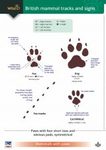![From Sound to Synapse From Sound to Synapse]()
Click to have a closer look
About this book
Contents
Customer reviews
Related titles
About this book
This book describes the major steps by which the mammalian ear transforms sound into nerve impulses. The author leads us along the pathway followed by an acoustic signal-collected by the outer ear, augmented by the middle ear, then delivered to the inner ear where the minuscule vibrations of the sound waves are transformed into nerve impulses. At each stage, the basic mechanisms are described qualitatively in terms of current theories and illustrated with experimental data. Where appropriate, related mechanisms in the ears of other vertebrates are considered. It is shown that the mammalian ear does an exquisite job of translating sound signals into a very robust nerve-pulse code. The book concludes with descriptions of some common ear impairments and a brief survey of the treatments available for them. The text is integrated with animations of mechanical and neural phenomena available through the Internet.
Contents
1. Introduction; The Task of the Ear; Two Overriding Characteristics of the Ears Transformations; General Features of this Book; Entre; I. MECHANISMS OF THE EAR; 2. Sound Waves; Propagation of Sound Waves; Amplitudes; Waveforms; The Frequency-Pressure Range of Human Perception; 3. The External Ear; Acoustic Considerations; Physical Mechanisms of Interaurnal Sound Differences; Implications Regarding Performance of the Auditory System; 4. The Middle Ear; The Reptilian Middle Ear; The Mammalian Middle Ear; Middle-Ear Muscles; Diagnostic Tests Involving the Middle Ear; Recapitulation; 5. Sound-Induced Vibrations within the Inner Ear; Basic Anatomy; Sound Propagation within the Inner Ear; Mechanical Measurements Made in Dead Cochleas; A Model of Cochlear-Partition Vibrations; Mechanical Measurements Made in Living Cochleas; Response Patterns to Complex Sounds; A Look Ahead; 6. Transfer of Sound-Induced Vibrations to Sensing Cells; Functional Anatomy; Basic Mechanical Motions; Chemical And Electrical Milieu of the Organ of Corti; II. HAIR-CELL FUNCTIONS; 7. Transduction Processes in Hair Cells; Ultra-Structural Anatomy; Transduction of Ciliary Rotations into Cell Potentials; Mechanisms of Hair-Cell Frequency Selectivity; 8. Hair Cells of the Mammalian Cochlea; Structural Anatomy; Ion Flows through Plasma Membranes; Basic Electrophysiology; Transduction Potentials; Motility of Outer Hair Cells (Reverse Transduction); 9. The Cochlear Amplifier; Historical Background; The Role of Outer Hair Cells I Cochlear-Partition; A Cochlear Mode; Another Possible Amplification Process; Summary; 10. Nonlinear Responses of the Cochlear Partition: Suppressions and Otoacoustic Emissions; Review of Linear Systems; Two-Tone Suppressions; Otoacoustic Emissions; Summary of Nonlinear Phenomena; III. NEURAL RESPONSES; 11. Afferent Innervation; Synaptic Transmission between Hair Cells and Afferent Neurons; Neural Activity in the Absence of Deliberate Acoustic Stimulation; 12. Responses of Primary Auditory Neurons to Single Tones; General Pattern of Responses; Properties of Discharge-Rate Responses; Temporal Synchronization of Discharges to Stimulus; 13. Responses of Primary Auditory Neurons to Other Basic Sounds; Relationships between Time and Frequency; Responses to Clicks; Responses to Modulated Tones; Responses to Pairs of Tones; Coda; 14. Responses of Primary Auditory Neurons to Speech Sounds; Speech Acoustics; Responses to Vowel Sounds; Responses to Certain Voiceless Consonants; A Class of Useful Models; Responses to Consonant-Vowel Combinations (Syllables); Responses to Syllables in Noise; Summary; 15. Feedback from the Central Nervous System; Anatomy; Responses of Single Efferent Neurons; Cochlear Responses to Efferent-System Activation; Neurotransmitters of the Efferent Systems; A Model of MOC Efferent Activity; Functions of the Cochlear Efferent System; The Roles of Efferents in Other Acoustico-Lateralis Systems; Synopsis; IV. DAMAGE AND TREATMENT; 16. Damage to the Ear and Hearing Impairment; Threats to the Sense of Hearing; Defects in the External and Middle Ears (Conductive Hearing Losses); Defects in the Inner Ear (Sensory and Strial Losses); Defects of Primary Auditory Neurons (Neural Pathology); Tinnitus; Summary; 17. Treatments of Damaged Ears; Introduction; Procedures and Prostheses for Treating Middle-Ear Disorders; Aids for Treating Inner-Ear Disorders; Treatments of Tinnitus; Repair and Regrowth of the Damaged Cochlea; Curtain; Appendix A: Fourier Theory: The Representation of Continuous Waveforms with Sinusoids; Sinusoids (Sines and Cosines); The Usefulness of Sinusoids; Harmonic Relationships; Fourier Series; The Fast Fourier Transform; Aperiodic Signals; Other Analysis Techniques; Appendix B: Acoustic Resonances; Appendix C: Impedance; Responses to Linear (Time-Invariant) Systems; Impedance Calculations; Index; Bibliography
Customer Reviews















![How to Find and Identify Mammals [Revised Edition]](http://mediacdn.nhbs.com/jackets/jackets_resizer_medium/21/210208.jpg?height=150&width=106)



















